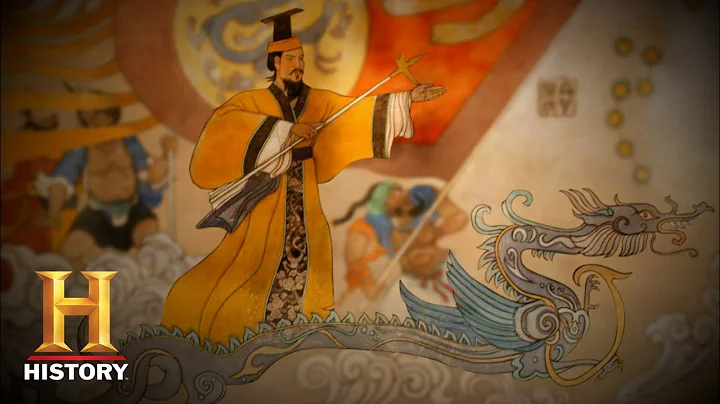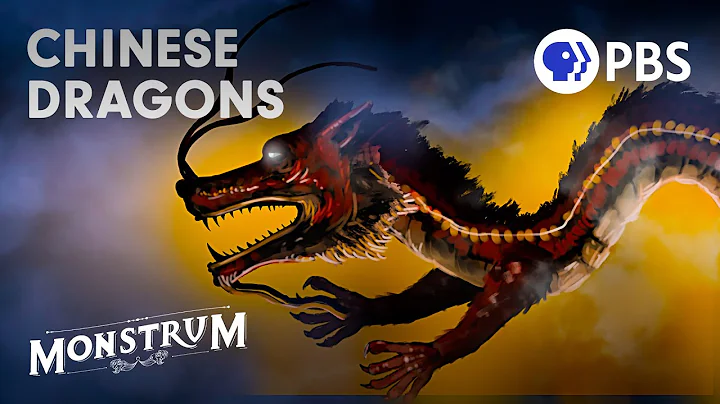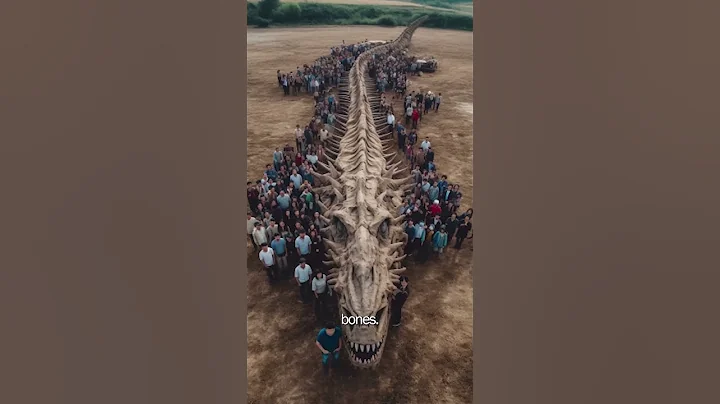The specific history of mankind, if there is one, must be the history of all people, and it must also be the history of all human hopes, struggles and sufferings.
Overthrew the Manchu and established the Republic
During the Revolution of 1911 in early November 1911, the entire province was restored except for a corner of Bozhou .
In April of the first year of the Republic of China (1912), Bozhou was recovered and renamed Bo County, directly under the jurisdiction of the province.
In May of the third year of the Republic of China (1914), Anhui Province established three roads: Anqing Road, Wuhu Road, and Huaisi Road. Bo County belonged to Huaisi Road.

After August of the 21st year of the Republic of China (1932), the "Interim Regulations of the Administrative Supervision Office" were implemented. The province was divided into 10 administrative supervision districts, and Bo County belonged to the seventh district (governing Fuyang ).
During the Anti-Japanese War, in July of the 27th year of the Republic of China (1938), in order to adapt to the needs of the situation, Mengcheng was transferred from the Sixth District (governing Si County) to the Seventh District (governing Fuyang).
In the twenty-eighth year of the Republic of China (1939), the Japanese army fell into trouble. The Kuomintang Bo County government moved to the ancient city in the south of the city, and most of Bo County and Woyang were placed under the jurisdiction of the Xuzhou Maintenance Council.

In March of the 29th year of the Republic of China (1940), the Wang Puppet Nanjing Government was established. Bo County and Woyang were under the jurisdiction of the Puppet Northern Jiangsu Administrative Commissioner's Office. In April, the anti-Japanese democratic government led by the Communist Party, the Wobei Office (later changed to the Bo County Anti-Japanese Democratic Government), appeared in Guantang and Liuji areas in the eastern part of Bo County.
In February of the 31st year of the Republic of China (1942), the Wang Puppet Government established the Suhuai Special Zone, to which Bo County and Woyang belonged.
In February of the 33rd year of the Republic of China (1944), the Wang puppet government changed the "Suhuai Special Zone" to "Huaihai Province", and Bo County and Woyang were under the jurisdiction of Huaihai Province. Woyang belongs to the Third Prefecture of Huaihai Province, and Bo County belongs to Henan Province's Yudong Road. At this time, Bo County had a situation where the Kuomintang Bo County regime (in the ancient city), the Japanese and puppet regime (in the urban area), and the Communist regime (in the border area) coexisted.
From November 1944 to March 1949, based on the needs of the struggle against the enemy, the superior party committee crossed the county boundary of Bo County (now Qiaocheng District ) and successively established Xue Shang Bo, Shang Bo Lu Zhe, Lu Bo Tai, and Wo The five border counties including Bo County and Xuewuo County united and led the people to fight bloody battles under the conditions of hardship and hardship, where the enemy was strong and we were weak, and gradually developed and expanded, eventually liberating the entire Bo County.
After the victory of the Anti-Japanese War in the 34th year of the Republic of China (1945), the Kuomintang Bo County government moved back to the urban area. The administrative district of Anhui Province restored the 10-district system before the Anti-Japanese War. Bo County belonged to the third district (governing Fuyang).
In February of the 36th year of the Republic of China (1947), most of Bo County was liberated. The Kuomintang Bo County regime could only control the county seat and its suburbs.
In February of the 37th year of the Republic of China (1948), the entire Bo County was liberated, and in August Bozhou City was established in Chengguan.
In March 1949, according to the instructions of the central government, the administrative divisions were returned to the original organizational system. The Bo County part of the original five border counties was merged with Bozhou City to establish the Bo County People's Government, which was affiliated to the Fuyang District of the Northern Anhui Administrative Office.
In October 1949, the Bo County Democratic Government was renamed the Bo County People's Government.
If you want peace, prepare for war.
During the War of Liberation, Bo County (today's Bozhou City), located at the junction of Henan, Anhui and Jiangsu provinces, became a strategic location that the People's Liberation Army and the Kuomintang Army competed to seize. Due to the relatively weak strength of the Communist Party, facing the Kuomintang defenders occupying the city, they could only adopt a combat policy focusing on annihilating the enemy's effective forces, concentrate their superior forces to defeat them one by one, and strive to annihilate the enemy in mobile warfare. Therefore, a "tug-of-war" strategic situation has been formed in the Bozhou area, in which we come to the enemy and the enemy comes to us.
“The fighting was the fiercest during the first liberation.” According to Shi Mingjin, director of the Party History and Local History Research Office of the Bozhou Municipal Party Committee, on February 1, 1947, in order to expand the liberated area, the sixth column of the Shanxi-Hebei-Shandong-Henan Field Army attacked Bozhou City. After taking care of the enemies on the outside, launch an attack on the enemies huddled in the city.At that time, there were nearly 2,000 Kuomintang troops, joint self-defense regiments, security corps, and other reactionary armed forces stationed in the county. They guarded the four gates in the east, west, south, and north of Bo County. The command post was located on the south side of Laozhuan Street Road in Beiguan; this is Because there are four gates in the east, west, south and north, the north gate is the north gate of Bozhou City. It has crisscross streets and ditches, making it easy to defend but difficult to attack. It is the focus of the enemy's fortification. However, our army quickly occupied Beiguan after a fierce charge. Subsequently, the east, west and south passes were also breached one after another.
While the People's Liberation Army was intensively attacking the city, the Kuomintang reinforcements broke through the blocking defense line of the Independent Brigade of the Henan-Anhui-Su Military Region and arrived near Kangwangzhuang in the northwest of the city along the Boshang Highway at 15:00 on February 2. The situation was very critical. Our army decided to strengthen its offensive. With the cooperation of fierce artillery fire, the siege troops at the north gate destroyed the city fortifications and entered the city; the siege troops at the east gate used mountain cannons to knock over the enemy's city tower fortifications and bunkers, and also blew up the bunkers and barbed wire fences under the city gate. Quickly enter the city. Around 18:00, the People's Liberation Army launched a general offensive.
"The North Gate siege troops continued to advance, but were blocked by Kuomintang troops on Baibu Street and their attack was blocked. The siege troops broke through the walls of private houses on the east and west sides of Baibu Street, opened up a new offensive line, and Machine guns were mounted on nearby high roofs to suppress the enemy's firepower and cover the troops' attack. Upon seeing this, the enemy troops set fire to nearby houses while intensifying their firepower, in an attempt to stop the attack. The troops entering the city braved the enemy's bullets and advanced rapidly. Fierce street fighting started with the enemy. The street fighting lasted for three days, and it was quite brutal. "As Shi Mingjin recounted, a fierce battle scene between the enemy and ourselves seemed to appear before our eyes.
Although the Kuomintang troops who were eager to rescue made many crazy counterattacks under the cover of several aircraft, they were all repelled by our troops. The fighting ended at noon on February 5, and Bo County was liberated for the first time.
seized the opportunity to capture
twice. On February 13, 1947, a week later, the main force of the Kuomintang invaded the west from Bengbu , and the Kuomintang Bo County government and its armed forces fled back to Bozhou City. "At that time, the People's Liberation Army stationed in Bozhou was weak and had no choice but to retreat." Shi Mingjin said.
In June and July of the same year, when Liu and Deng's armies forcibly crossed the Yellow River in southwest Shandong and launched the Southwest Shandong Campaign, most of the Kuomintang regular troops who were "encircling and suppressing" our Henan, Anhui and Soviet Military Region troops were transferred northward. Many counties only have provincial and county security teams and local armed forces stationed there. Seizing this opportunity, the independent brigade of the Henan, Anhui and Jiangsu Military Region fought continuously despite the scorching heat of midsummer, and quickly advanced towards Bozhou after liberating the Luyi county seat on July 8.
"This liberation process is a bit interesting." Shi Mingjin told us that when the troops were approaching Bozhou City, the independent brigade sent people into the city for reconnaissance. The scouts changed into plain clothes and entered the city, arresting three Kuomintang town office personnel. They learned that there were only 700 or 800 Kuomintang local security corps members in the city. On July 9, the Independence Brigade arrived outside Bozhou City to attack the city, and captured it with almost no effort. It turned out that the defenders had fled outside the city when the People's Liberation Army attacked the city. The People's Liberation Army subsequently entered the city, and Bozhou was captured for the second time.
According to the strategic deployment, the troops stayed in Bozhou City for one night, and the next day they turned west to attack Taikang . The Kuomintang troops entered the city again, and this led to the subsequent "three strikes" in Bozhou City. However, in Shi Mingjin's view, it was particularly easy to conquer Bozhou for the third time. "It can be said that Bozhou was liberated as the march passed by." It turned out that after Liu and Deng's army won the battle of southwest Shandong, they then moved to the southwest The troops in the Dabie Mountains implemented the Thousand Miles Leap Forward without any rear and passed through Bozhou City in mid-August 1947. When the Ninth Brigade of the Third Column arrived in Bozhou, the Kuomintang defenders and political personnel with Cao Pushan as the county magistrate had already fled, and Bozhou was liberated for the third time. The next day, the troops continued to advance south. Soon, Bozhou City was occupied by the Kuomintang troops again.
Outsmarted Bozhou in disguise
After Liu and Deng's armies advanced into Dabie Mountains , Chen Yi , Su Yu personally led 8 columns of the East China Field Army's outer corps into 5 routes, and went south to the Henan, Anhui, and Jiangsu areas on September 26, 1947.According to the strategic deployment, the 16th Division of the Sixth Column of the East China Field Army assumed the task of conquering Bozhou and Xiangcheng. "In order to completely annihilate the enemy, this time our army adopted a variety of tactical methods such as rushing forward, chasing fiercely, outflanking, and outwitness in disguise. Among them, outwitness in disguise made a great contribution." Shi Mingjin told us in detail Understand the implementation of tactics at that time.
The 16th Division of the Sixth Column of the East China Field Army arrived in Bo County on the morning of September 28 and found that there were more than 1,000 Kuomintang security groups and local armed forces in the city, led by the Kuomintang Bo County Magistrate Yao Dumin. After learning about this situation, Chief of Staff Yan Fu led a reinforced battalion and division reconnaissance company, disguised as troops of the Kuomintang's reorganized 11th Division, and passed through Xiaozhai and Wohe in the north of the city, arriving at Beiguan. When the troops entered the city via Beiguan, the Kuomintang guarding post asked. Yan Fu replied that he was from the 11th Division reorganized by the Kuomintang. He also asked for the addresses of the county government and the security group. After entering the city, they immediately arranged for the troops to separate and march towards the county government and the security group's residence.
But at this moment, a "danger" happened. Because our army prematurely surrendered the guns of the Kuomintang posts at Beiguan Dashilan Gate and Xinqiaokou, a city guarding post suddenly opened fire to call the police. Our army killed the sentry on the spot, but the gunfire exposed our army's whereabouts. The enemies in the city suddenly realized this and ordered each squadron to attack separately. But it was too late, our army had entered the city from the north gate. Among them, the Forty-seventh Regiment arrived a step late due to its long detour and the obstruction of the Wohe River. It happened to be blocked by a squadron of the Kuomintang at the wooden bridge of the Wohe River. The enemy squadron was vulnerable and was annihilated by our army. Seeing that his life was in danger, the county magistrate Yao Dumin rushed to escape from the west gate and south gate with his remaining soldiers. Bozhou was liberated for the fourth time.
Annihilation of the enemy was finally successful.
Due to the special geographical location and the central government's strategic deployment of "cooperating with the three armed forces to manage the Central Plains" and annihilating the enemy's effective forces during the movement, Bozhou was occupied by the Kuomintang army after several liberations.
The time came in November 1947, when Chen Su's army entered the Henan, Anhui and Jiangsu areas for mopping up operations, the first column of the East China Field Army was ordered to march westward from the Jinpu Railway, liberating several cities on the way. On November 6, when the troops arrived at the county seat of Bo County, the Kuomintang troops defending the city fled after hearing the news. The People's Liberation Army won without a fight, and Bo County was liberated for the fifth time.
"Shortly after the fifth liberation, Bo County quickly ushered in the final victory." Shi Mingjin said. When Liu and Deng's armies advanced southward into the Dabie Mountains in 1947, the 11th Column under their jurisdiction stayed in the north and was temporarily under the unified command of the East China Field Army to contain the enemy's forces. In February 1948, the 11th Column was ordered to go south to the Henan, Anhui and Jiangsu regions to transport strategic materials, silver coins and cadres to Liu and Deng's armies in the Dabie Mountains, while also containing the enemy's forces. Among them is the task of attacking and liberating Bo County.
html On December 20, the 31st Brigade of the 11th Column stationed in Baimiaoji, more than 30 kilometers away from Bo County, and attacked Bo County that night. At that time, there were about 700 to 800 people from the Kuomintang local security corps and self-defense forces stationed in the city, and only over a thousand people including the county and district joint defense teams. After the troops arrived in Bo County in the middle of the night, they quickly occupied the Wobei Xiaozhai and then launched an siege. "The battle started at around 4 o'clock in the morning on February 21. Each regiment quickly occupied the four passes and the offensive was fierce." Shi Mingjin said that the People's Liberation Army first used mortars to blow up the fire points on the city gate tower, and then used firepower to Press down the enemy, break through the city wall, and enter the city. After the People's Liberation Army entered the city, the enemy rebelled without fighting and tried to open the city gates to escape, but were completely annihilated by the People's Liberation Army. Bozhou was finally liberated.From February 1, 1947 to February 21, 1948, within one year, in order to liberate Bozhou, our army and the Kuomintang troops conducted six "tug-of-wars", during which there were many thrilling and dangerous stories, but in the end Completely liberate Bozhou. However, in Shi Mingjin’s view, during the War of Liberation, all counties in Bozhou experienced several liberation processes, which was a significant feature in the history of Bozhou’s liberation. "For example, Guoyang was liberated five times from September 1945 to May 1948, and Mengcheng was liberated three times from 1947 to June 1948..." After the counties in Bozhou were liberated one after another, the people of Bozhou under the leadership of the Communist Party of China embarked on a new historical journey.
After the Huaihai Campaign, eastern Henan and northern Anhui were all liberated, and the focus of the party's work shifted from rural areas to cities. According to the "Instructions of the Central Committee of the Communist Party of China on the Return of the Original Boundaries of Provinces and Counties under the Administrative Jurisdiction of Liberated Areas across the Country", in March 1949, the Wubo Border Districts and Counties and Bozhou City that crossed the territory of Bo County were revoked and returned to their original organizational structure. The original boundaries between Bozhou City and the border districts and counties were The parts belonging to Bo County were merged to form the Bo County Committee of the Communist Party of China and the Bo County Democratic Government. Wubo Border County and Bozhou City at that time successfully completed their historical mission.





















